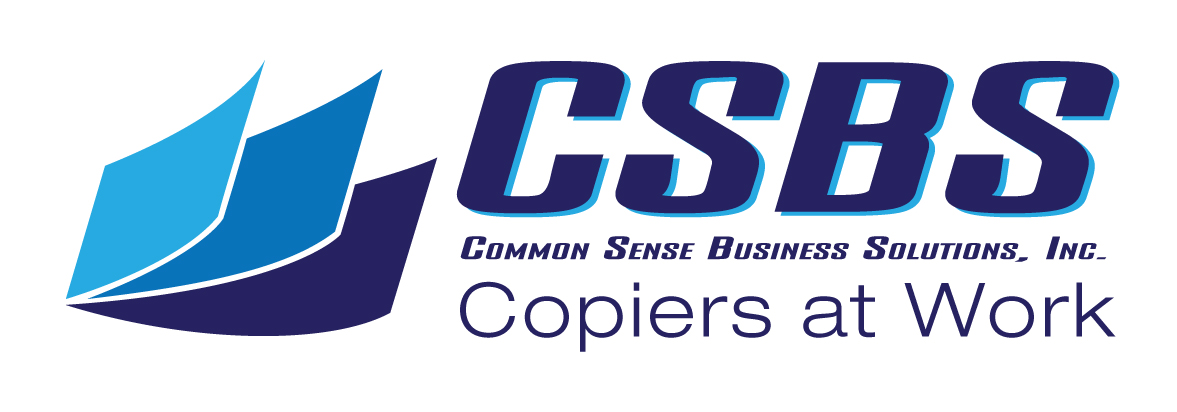It seems that in every office and work environment there are one or two “Key Operators” that know all the ins and outs of using the office copier and the remainder of the staff have limited understanding on how to utilize the full extent of the available features.
This dilemma raises flags on two different fronts; first, it means that a large portion of the staff is not able to benefit by having access to use the office copier to the extent of its capabilities. Second, it means that the one or two key operators that do now how to use all of the capabilities are constantly interrupted to help facilitate various copying/printing tasks for the remainder of the staff.
One way to eliminate the dilemma outlined above is to make sure that the service provider for your office copier is willing to provide complimentary follow up training for staff members that rely on the copier. Most companies have turnover on their staff during the life of a copier which results in having a portion of the staff unfamiliar with the inner workings of the office copier. By scheduling an annual training you will enable existing staff members to have questions answered and newer staff members to receive the training necessary to adequately operate the copier to its capabilities.
Additionally, have the customer support representative from your copier service provider help you to create shortcuts. Shortcuts allow you to take all of the individual steps necessary to accommodate a more complicated copying or printing procedure and program these multiple steps into a single step shortcut. The end user can simply touch the button for “Shortcut #1” for example and the machine will automatically change its settings to accommodate a specific task.
As an example, you can create a single button shortcut that instructing the machine to use the following group of settings: 2 sided copying, use color paper that is kept in tray #3, import a date stamp on page #1 and place a corner staple in each set of copies. By simply selecting a single shortcut button the end user doesn’t need to manually select these four individual settings needed to accomplish the end result of their copy job. Shortcuts can also be stored in the printer driver settings on an individual computer allowing users to select a shortcut to accommodate print jobs that require multiple settings to accomplish the desired outcome.
In summary it is important that when deciding where to purchase/lease your next office copier that you confirm that your copier service provider is willing to provide complimentary annual trainings to support new staff members and answer questions.
It is also important to confirm that your copier service provider is willing to offer complimentary telephone support when staff members have an operational question. Lastly it is critical that during the initial setup of the machine that your copier service provider will help you setup shortcuts to streamline the ability to complete the more challenging copy and print jobs done by your organization.

FAQs about Office Copiers
1. Why is it important for office staff to have comprehensive training on using office copiers?
Having comprehensive training ensures that staff can utilize all features of the copier, maximizing its capabilities and productivity. It reduces reliance on a few key operators and empowers all staff to handle copying tasks efficiently.
2. How can office copier service providers support staff training?
Reputable copier service providers often offer complimentary annual training sessions for staff. These sessions help existing staff members refresh their knowledge and provide new staff with the necessary training to operate the copier effectively.
3. What are shortcuts, and how do they benefit copier users?
Shortcuts are pre-programmed settings that streamline complex copying or printing tasks into a single step. They save time by eliminating the need to manually adjust settings for each task, enhancing efficiency and reducing errors.
4. Can shortcuts be customized for specific copying or printing needs?
Yes, shortcuts can be customized to accommodate various tasks, such as double-sided copying, using specific paper trays, adding date stamps, or applying staples. This customization ensures that users can quickly access settings tailored to their requirements.
5. How are shortcuts created and accessed on office copiers?
Shortcuts are created with the assistance of customer support representatives from copier service providers. Once created, they can be assigned to shortcut buttons on the copier’s control panel or stored in the printer driver settings on individual computers for easy access.
6. What benefits do shortcuts offer in terms of efficiency?
By simplifying complex tasks into one-touch operations, shortcuts streamline workflow processes and minimize the time spent on manual adjustments. This increased efficiency allows staff to focus on other important tasks.
7. Are shortcuts only beneficial for copying tasks, or can they also be used for printing
Shortcuts can be utilized for both copying and printing tasks. Whether it’s creating multiple copies with specific settings or printing documents with customized configurations, shortcuts enhance efficiency across various operations.
8. How do shortcuts contribute to reducing operational costs?
By reducing the time and effort required to complete copying and printing tasks, shortcuts contribute to overall cost savings. They optimize resource utilization and minimize downtime, resulting in improved productivity and efficiency.
9. What role does copier service provider support play in ensuring effective shortcut usage?
Copier service providers offer ongoing telephone support to address any operational questions or concerns regarding shortcut usage. This support ensures that staff can make the most of the copier’s capabilities without interruptions.
10. Why should businesses prioritize copier service providers that offer training and shortcut setup assistance?
Businesses should prioritize such providers as they empower staff with the skills and tools needed to operate office copiers efficiently. This leads to improved productivity, reduced downtime, and ultimately, cost savings for the organization.



